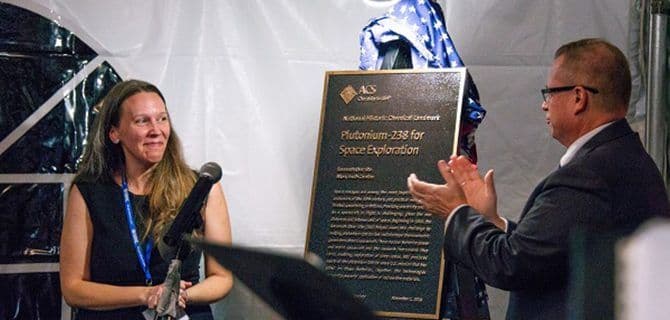The American Chemical Society designated Aiken, South Carolina’s Savannah River Site (SRS) as the newest National Historic Chemical Landmark, recognizing its role in the production of a plutonium isotope that proved essential to space exploration. Beginning in 1960, SRS produced almost all the plutonium-238 used in a class of nuclear batteries that provide U.S. spacecraft […]

The American Chemical Society designated Aiken, South Carolina’s Savannah River Site (SRS) as the newest National Historic Chemical Landmark, recognizing its role in the production of a plutonium isotope that proved essential to space exploration.
Beginning in 1960, SRS produced almost all the plutonium-238 used in a class of nuclear batteries that provide U.S. spacecraft with the heat and electricity necessary to power and maintain research instruments in the cold of deep space.
While production of plutonium-238 at SRS ended in 1988, the stockpile of the material it produced has continued to be used. And of course, the material aboard launched spacecraft, such as the Voyager 2 probe, continues to provide power as these craft travel the far reaches of our solar system.
A ceremony marking this achievement was held on Nov. 1 at the SRS Heritage Museum in Aiken, marking the site as South Carolina’s first-ever National Historic Chemical Landmark. The celebration, along with a technical symposium on the production and use of plutonium-238, was held alongside the Southeastern Regional Meeting of ACS.
The new Landmark was mentioned on Episode 1 of Orbitals, ACS’ new monthly podcast. More information about the site will be posted on the Landmarks website.